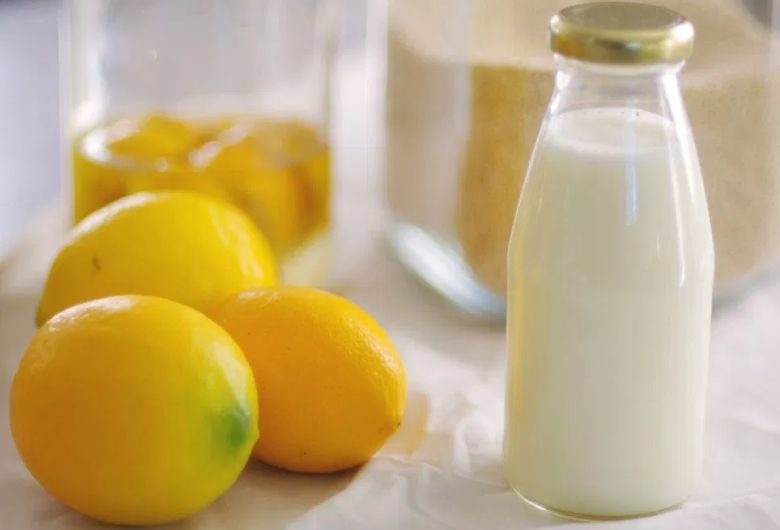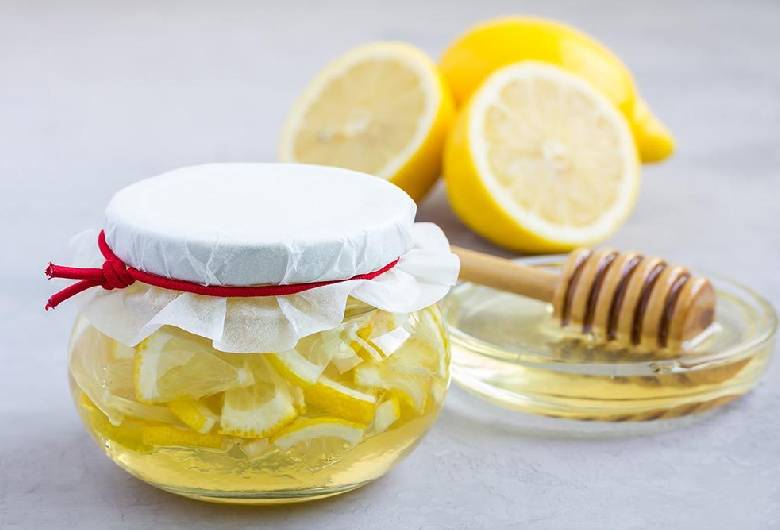Who says that facial bleaching is all about getting fairer? If you are looking for a way to prevent skin cells from the day-to-day damage caused by dirt, grime, pollution, harsh sun rays, and an unhealthy lifestyle, you can consider bleaching. No matter how many non-bleach skin-lightening products you try to restore the brightness of your dull skin, nothing works like an excellent skin-bleaching agent. And if it is natural, it becomes even safer and more effective. Are you interested to know how to try natural bleaching at home? Go through the five best natural facial bleach recipes to quickly restore your face’s natural shine and glow.
What Is Facial Bleaching?
Facial bleaching is a skin-lightening process that removes dirt and stains from the facial skin and oxidizes it simultaneously. It is one of the most accessible and excellent methods to achieve a lighter skin tone. Bleaching helps dilute the concentration or production of the pigment (melanin) in the skin cells called melanocytes, which lightens the skin tone and evens it. The entire process is carried out quite impeccably by ammonia-laden bleaching agents. There are also some potent natural alternatives to these commercial products, which offer similar effects more safely. (1)
The amount of melanin present in our skin determines its tone. The more it is, the darker the skin tone will be. Some of the most common factors responsible for melnanin production include genetics, hormones, certain chemical compounds, sunlight, etc.
What are the Benefits of Facial Bleaching?
While facial skin bleaching has no health benefits, the procedure offers certain cosmetic effects, primarily when treating specific skin conditions. The following are the most exciting benefits of facial bleaching practices:
- Minimizes dark spots caused by aging, hormonal imbalance, and sun damage
- Reduces skin discoloration, including ages spots or liver spots, sunspots, melasma, freckles,
- Fades post-inflammatory marks resulted from conditions like eczema, psoriasis, etc.
- Reduces the appearance of red or dark scars left by acne and breakouts
- It helps in lightening fine facial hair strands to avoid the ugly appearance
- Evens out skin tone by working on patches or hyperpigmented areas
Read Also – How-to Guide: Bleach Your Eyebrows at Home
Why Use Natural Facial Bleaches?
Commercial facial bleaching products harm our skin more than good in the long run. Mercury toxicity is the most common danger associated with them. While the United States has banned mercury in skin-lightening creams, most such products from other countries have been found to cause mercury poisoning (2). In addition, several case studies and reports have linked skin-bleaching products to issues such as contact dermatitis, steroid acne, and nephrotic syndrome. Furthermore, long-term use of hydroquinone-rich skin-lightening agents also leads to blue-black pigmentation of the skin, known as exogenous ochronosis (EO) (3). Hence, homemade natural bleaches are used widely nowadays. Prepare your bleach recipes using all-natural ingredients and avoid all adverse effects of chemical bleaches. You can also get a soft, supple, and flawless complexion with the help of homemade facial bleaches.
In 2006, the Food and Drug Administration (FDA) declared over-the-counter (OTC) skin bleaching products unsafe and ineffective. They are also not recommended for use by pregnant women, breastfeeding mothers, and children.
5 Homemade Natural Facial Bleach Recipes
We present some of the best homemade facial bleach recipes to help you look gorgeous with a rejuvenated skin tone. Here we go:
Also Read – 10 Best Hair Smoothing Creams Available in India for a Frizz-Free, Sleek Finish
1. Milk Cream and Lemon Juice Facial Bleach
This is one of the most effective facial bleach masks you can ever try at home. You only need two tablespoons of fresh milk cream, a few drops of lemon juice, and a pinch of turmeric powder to make this mask. Mix all the ingredients nicely to form a smooth paste. Now, apply this paste all over your face using your finger. Let it be there for 10-15 minutes, then wash it off with lukewarm water. Repeat this procedure for a few consecutive days to get the fairest complexion.
Tip: The best results of this bleaching mask is observed with morning application.
Also, Did You Know These Uses of Apple Cider Vinegar for Skin Lightening?
2. Oatmeal and Olive Oil Facial Bleach
Olive oil becomes your best face-bleaching companion if you have dry skin. Combining it with oatmeal will help you exfoliate your skin beautifully while treating sunspots, age spots, and tanning (4). Mix two tablespoons of oatmeal, one tablespoon of olive oil, and an equal amount of yogurt in a bowl to form a homogeneous paste. Add a few drops of lemon juice to this paste and apply it to your face. Allow it to dry for 15 minutes, then rinse with cold water. Finally, pat the skin dry and apply your go-to moisturizer to experience newfound suppleness with an evened-out tone.
3. Lemon Juice and Honey Facial Bleach
Again, this is an excellent homemade bleach that endows you with a fairer facial tone. Being rich in vitamin C, lemon juice is considered a potent bleaching agent (5). When mixed with honey, its benefits are doubled. Add a few drops of lemon juice to a tablespoon of honey, mix them well, and then apply the mixture to your face. This will remove all the dirt from your skin and make you glow like never before. Regular honey and lemon juice will make your facial skin many shades fairer.
4. Cucumber and Lemon Juice Facial Bleach
Just like lemon, cucumber also holds excellent bleaching properties. When these two natural products are mixed, they form one of the best natural bleaching agents for your delicate facial skin. To make this DIY face bleach, mix a tablespoon of cucumber juice with a tablespoon of lemon juice. Now, apply this liquid blend to your face and rub very gently with your fingertips for around five minutes. Then, rinse with fresh water and pat dry the skin. The best thing about this recipe is that it works like fantastic instant bleach!
5. Vegetable Facial Bleach
Last, look into your vegetable basket for some of the most economical yet helpful natural bleaching agents. Take tomato juice, cucumber juice, and potato juice in one tablespoon each and combine them nicely to create a simple recipe with instant bleaching power. Apply the juice mixture to your face uniformly and wait until it dries. Then, wash it off with tepid water and enjoy your beautiful skin.
Facial Bleaching Don’ts to Remember
Ready to get your smiling and shining beauty back with these easy-peasy homemade natural bleaching recipes? Wait a minute! Check out the DON’TS before you proceed to make the most of your effort:
- Do not try facial bleaching if you have sensitive skin. Though natural products are mild for our skin, it is still better to stay protected.
- Skip the fragile eye and mouth areas while applying the natural bleach.
- Please do not keep the bleach on your facial skin for long, as it will eventually damage your cells.
- Never go out in the sun right after bleaching your skin. Also, use a high-SPF sunscreen whenever you are out afterward.
- Try to limit your homemade facial bleaching session only to once per month. Overdoing it will damage the superficial layer of your skin, and you will end up ruining it over time.
Medical Treatments for Facial Skin Bleaching
If your facial skin is highly affected by hyperpigmentation, you may not find it practical to use natural facial bleaches. Medical treatments intended for decreasing the concentration or production of melanin in the skin can be helpful in such a case. Following are the options you can consider:
1. Prescription Creams
Most prescription creams contain hydroquinone concentrations between 4% and 8%. Active ingredients present in other similar medicated products include vitamin C, kojic acid, retinol, glycolic acid, arbutin, topical steroids, azelaic acid, niacinamide, and tranexamic acid.
2. Chemical Peels
Your skin can turn lighter, even-toned, and rejuvenated with peels containing chemicals like alpha hydroxy acid (AHA), trichloroacetic acid (TCA), and retinol.
3. Nd: YAG Laser
It is a non-ablative laser that targets the pigmented cells in the skin without disrupting its barrier. It makes use of two wavelengths of high-energy light for lightening as well as healing the skin.
4. Intense Pulsed Light Therapy (IPL)
The high-energy pulsed light used in this procedure penetrates the skin’s dermis without causing any harm to it. Typically, the pigment cells in the skin absorb this light selectively, and the heat generated in the course destroys excessive pigment.
5. Laser Resurfacing
Resurfacing lasers like Erbium, Carbon dioxide, etc., emit light rays of high energy, eliminating the superficial damaged layers of the skin and increasing collagen production.
6. Microdermabrasion
In this method, an abrasive wand or a spray of crystals is used to get rid of the pigmented surface layer of the skin. This not only lightens the skin tone but also gives a polished look.
However, make sure that you consult a physician before going through these medical treatments.
Read Also – Check the List of Top 10 Pigmentation Creams for a Bright and Flawless Skin
Frequently Asked Questions (FAQs)
What is Done First, Bleach or Facial?
Bleach always comes before a facial. Once the facial is done, the dead cells from your outer skin are removed to give you healthy, radiant skin. There is no need to do anything else after it. Hence, bleach is always done first to ensure that skin lightening effect.
What to Do After Applying Bleach?
You may feel soreness and a burning sensation after bleaching your facial skin. Calm and soothe it with a natural coolant to get relief immediately. Rub ice cubes over your bleached skin or dip cotton pads into raw milk.
Can I Apply Moisturizer on Face After Bleach?
An excellent herbal moisturizer can undoubtedly be applied to the face after bleach. However, it is better to soothe the freshly bleached skin with a cooling agent first.
How Long Does Bleach Last on the Face?
Facial bleaching has temporary effects lasting only 20 to 25 days.
How Often Should I Bleach My Face?
Do not bleach your face too frequently. A minimum gap of 15 days is necessary between two consecutive bleaching sessions.
References:
- “Side Effects and Precautions of Skin Bleaching,” HealthLine.com
- “Mercury Poisoning Linked to Skin Lightening Creams,” VDH.virginia.gov
- “Exogenous Ochronosis,” ncbi.nlm.nih.gov
- “Oatmeal in Dermatology: A Brief Review“, ncbi.nlm.nih.gov
- “Vitamin C in Dermatology“, ncbi.nlm.nih.gov


